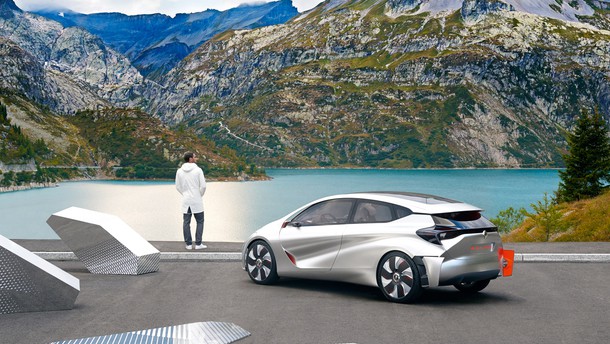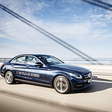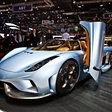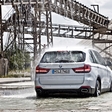
The Eolab suggests that Renault did not forget about plug‑in hybrids, and that they do possess the technology required but, at the same time, they are using it to show the importance of vehicle mass, when talking about consumption.
But first, the hybrid drivetrain. The people at Renault have combined the familiar entry level one‑liter three‑cylinder 57 kW engine from it's smaller conventionally powered models like Clio, with a 68 kW electric motor located where the clutch once lay. Instead of complicated gearboxes, they have decided on a simpler and more efficient solution: a three‑speed gearbox in which the first two speeds are used by the electric motor, while the third is used by the internal combustion engine. In full electric mode, the Eolab shifts between first and second gear at around 60 km/h and, at 120 km/h, it starts the gas‑powered engine, which uses the third gear. Even more interesting is its operation in hybrid mode (Renault call it the "Long Range" or "weekend" mode). In this mode, the gas‑powered engine starts at 70 km/h (or immediately after driving off during quick acceleration), and the car can be driven by both the gas‑powered engine and the electric motor, in first or second gear. In the prototype Eolab that we drove on the test track, the shift between first and second gear was unnoticeable, while the shift to third gear was accompanied by a jerk that announced the direct connection between the gas‑powered engine and the wheels.

The lithium‑ion batteries have a capacity of 6.7 kWh, which is enough to drive 66 kilometers in electric mode (according to the NEDC measurnig standard), and it has an average fuel consumption of one liter per 100 kilometers, according to the same standards (the first 66 kilometers in all‑electric mode, and a further 25 with a consumption of 3.6 liters, which means one liter of fuel per 100 kilometers). And by the way: this drivetrain could easily be installed in the Clio and the rear-engined Twingo.

Not only did Renault save on the drivetrain, they also saved on aerodynamics and mass. In the context of aerodynamics, they managed to reduce air drag by almost a third. This vehicle sits much lower than the classic cars in its class and, to make the interior more spacious, they have pushed the seats 150 millimeters forward, and 50 millimeters down. The bottom of the car is flat, the front spoiler is adjustable, the height of the car reduces with speed, and movable aerodynamic accessories are placed behind the rear fender, which "smooth out" the air current around the rear of the car at higher speeds.

In front of the driver, there is a completely digital dashboard, clearly displaying basic data and navigation, while everything else is shown on a large 28‑centimeter display. The choice of materials was the main factor in achieving great savings, in terms of mass. There is very little steel. Most of it is HSLA steel, placed in the front part of the car. Most of the rear the car is made of aluminum, while the door frames and the roof are made of magnesium, the windscreen is thinner, and the floor is made of composite plastic. Even the wheel covers are active, and the brake cooling slots open only when necessary. So a lot is saved – a total of 400 kilograms, when compared to the Clio.

The Clio, with its TCe 120 engine, needs nine seconds to reach 100 km/h, weighs 1205 kilograms and consumes 5.2 liters of fuel. The same acceleration could be achieved by the Eolab, if it were fitted with a less powerfull 90 hp TCe, and weighed 805 kilograms, consuming 3.6 liters of fuel. With its hybrid drive, the Eolab weighs 955 kilograms, and has the same acceleration, but its consumption is only one liter of fuel per 100 kilometers.

Will the Eolab ever be manufactured? Probably not in the form of Clio, as the engineers at Renault suggest that small cars should use the all‑electric mode. They say that Renault has recently presented a few larger cars (Kadjar and Espace), and has one or two more in store – for example, a successor to the Laguna. And Renault also says that the hybrid drive does belong in larger cars intended for regular long‑distance trips – so you can easily make your own conclusion. Despite Renault seemingly long shunning plug‑in hybrids, and insisting on the pure electric drive, this is actually not the case. Perhaps it appears so outwardly, but they actually began the development of the Eolab three and a half years ago, at a time when they officially did not want to hear anything about hybrid technology. But car manufacturers think a long way ahead.




